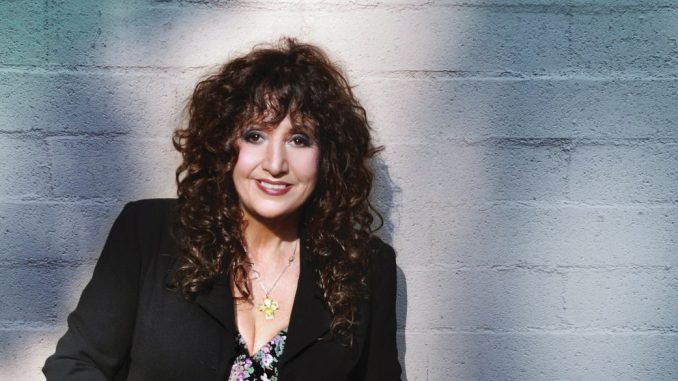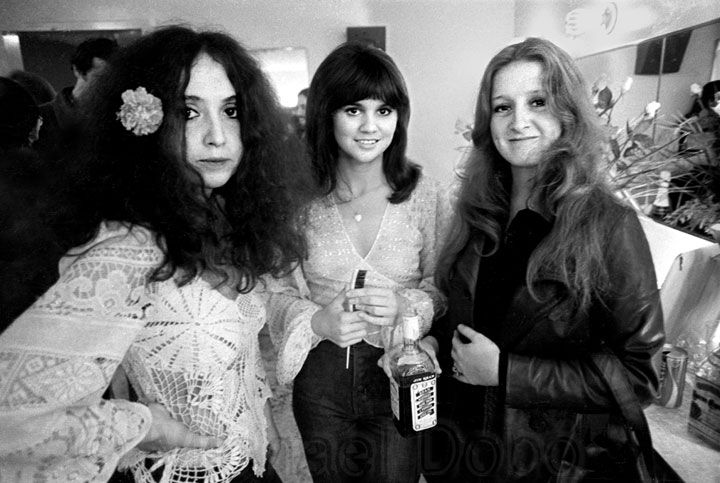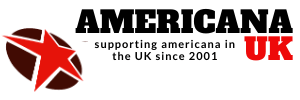
From New York hippie chick to grande dame of American roots music.
She started out as a New York hippie jug band chick playing with David Grisman and John Sebastian in the Even Dozen Jug Band before joining the Jim Kweskin Jug Band nearly sixty years ago. From a UK perspective, jug bands may have a whiff of quaintness about them as they came before the ‘60s psychedelic explosion, but in America, they performed a similar function to the UK skiffle groups and ensured that American roots music was preserved for future generations. Not only did the great San Francisco bands come out of the jug band tradition but the style and appearance of the Jim Kweskin Jug Band helped move the popular groups of the day to dress more in street clothes than the then favoured show biz style. Maria Muldaur has been at the centre of American roots music ever since, even scoring a top 20 hit in the ‘70s with ‘Midnight At The Oasis’. Americana UK’s Tim Martin caught up with Maria Muldaur to reflect on her long career, discuss her new album ‘Let’s Get Happy Together’, recorded with New Orleans’ own Tuba Skinny, and how Linda Ronstadt is trying to persuade her to write her autobiography.
Tell me about how you got together with Tuba Skinny.
Well, I was shopping in my favourite Woodstock clothing store Woodstock, New York because that’s where I used to live and I always love to go back there in the summertime, and I heard this delightful vintage jazz. I fancy myself to have a pretty good background in early jazz because I listened to it and studied it and performed it all my life. I didn’t recognise the name and she told me, Oh, they’re young street musicians who play in New Orleans and they’ve been in heavy rotation in my life ever since,
About two years ago I was in New Orleans making my ‘Don’t You Feel My Leg’ album and I realised, “Oh I can go see that Tuba Skinny in person”. So every chance I got, I would sneak away from my recording tasks and go hear them wherever they were playing. I was just there as a fan and the washboard player came up to me one day and said, “Is your name Maria?” I said yeah, so he was tickled to know that because apparently, he was a fan of the band I was in many decades ago the Jim Kweskin jug band. Anyway, he introduced me to the rest of the band, and then subsequently they asked me to sit in a few times so that’s how I connected with them.
What grabs your interest in a song, or starts you off researching about a particular artist or song?
I don’t write songs, so I’ve had to develop a knack of knowing who the best songwriters are. You hear a song and it’s just very subjective. I think I have a good sense of a lyric because a lot of the songs I’ve chosen to do over the years remain favourites with my bands. So that means they have something enduring. It might resonate with me at a particular time because I’m going through something that’s very similar to whatever’s being expressed in the song. Or, I think the best songs are both very personal and universal. That’s why it seems like early blues songs are completely relevant. Audiences relate to them because it’s unlike a genre I hate which is the singer-songwriter genre, with the exception of a few greats like Bob Dylan or Joni Mitchell or people that are truly in the pantheon of great songwriters. Singer-songwriter songs tend to be all about their personal feelings. In fact, there’s an old musician’s joke, how does a singer-songwriter warm up for a gig? They go, “Me Me Me Me”. But to me a good blues writer like Memphis Minnie, they talk about subjects that are affecting in a very personal way, but that are also touching on universal themes so they’re addressing the concerns of the human heart and spirit. So, that’s how I choose songs, and they have to have great chord changes they just have to make you go yeah inside.
I was wondering what the term “Americana” means to you?
About a dozen years ago I was being interviewed by someone and they said, “You know Maria you single-handedly invented the genre Americana, decades before anyone gave it a name. Look at your first album, you did a Jimmy Rogers song you did a Dolly Parton song you did a New Orleans blues, which was Blue Lu Barker’s ‘Don’t you Feel my Leg’. You did a McGarrigle Sisters song and songs by contemporary songwriters as well. And it was just a mix of all kinds of music.”. In my subsequent albums, I’d have Benny Carter and a big band, I had Doc Watson and his son Merle Watson, doing an old Clarence Ashley tune. I never was thinking about genres. This was just music I love. Back in the day, they called it folk music, but I like the term roots music better because folk music sometimes brings up the image of the wispy gal with long blonde hair, who’s sitting on a stool in a little coffeehouse strumming a nylon string guitar and singing about her feelings. So, I like the term roots music more but that’s what Americana is to me. I think the term came about after that movie. ‘Oh, Brother Where Art Thou’ in the 90s. That’s why a lot of people got to hear for the first time a voice like Ralph Stanley’s singing ‘O Death’. I think Americana music means to me; blues, bluegrass, old-timey Appalachian music which preceded bluegrass, Country music, Zydeco, Cajun, you know all the kinds of music that America produced because of it being a melting pot of so many different cultures.

What are your views on seeing some of your older performances being available on the the internet?
You never know what’s floating out there. That’s why I’m so careful about choosing material because it goes out into the airwaves and continues to vibrate forever. That’s why I’ve been careful all my life never to choose negative songs because I feel like there are enough negative messages getting out there. When I already had my big hit Lenny Waronker and Joe Boyd were getting ready to do my next album work, and one of the songs they suggested to me was, ‘You’re No Good’. And I said, I said, “Why would I want to put a message like that out there, you’re no good, you’re no good baby you’re no good,” I said, thanks, but I don’t want to do that. About a year later, Linda Ronstadt had a huge hit with it and took all that money to the bank, but I don’t regret it at all. It just reminds me that if you are going to have something out there it might be uplifting and positive.
You’ve done around 40 albums so far?
The way I’m counting this is the 43rd one
You’ve worked with so many different people, I hadn’t realised how much you played with the Jerry Garcia Band for instance.
Yes, that was an interesting little side trip in my career, that I’m very grateful for the experience. With Benny Carter in the studio and an all-star cast of jazz greats and there’s me a little jug band hippie chick, getting to work with all these great people. Not to mention Doc Watson, Merle Watson Ry Cooder, David Lindley the list goes on. Dr John was a major influence on my music. I first connected with him when I got the opportunity to do my first solo album that had that hit on it ‘Midnight At The Oasis’ you know what, it was a golden age of recording where there was plenty of money to do really high-quality recordings and they just said, “Say who you want on each song and we’ll get them for you.”. I was already a huge fan of Dr John, so I asked for him and he came into the studio and we recorded several things. Dr John recorded on several of my albums with Warner Brothers, and then in the 80s, when both of us were what you might euphemistically call between labels, we decided to tour together as a duet. And I had the best time doing that, that was a real musical treat to just get to hear him play that fabulous, wonderful New Orleans piano style he has. He taught me so much about New Orleans music
In the sleeve notes too. “Let’s Get Happy Together” you compare the feel you got working with Tuba Skinny now in New Orleans to when you were starting out in Greenwich Village in the 60s.
Greenwich Village, and I grew up there, was always a mecca for artists and sculptors and poets and musicians and free spirits and free thinkers of all sorts. So there was a more casual lifestyle going on there but I would say the atmosphere of New Orleans is way more permeated with all kinds of great music than Greenwich Village ever was. I used to go by the Village Vanguard on my way back from school and I would sit at the top of the stairs and listen to Bill Evans. Then there were some folk clubs. There was the music in Washington Square Park on Sundays. It was sort of like a mini folk festival going on. There’d be all these different jams going on in the middle of the park. People playing bluegrass and then if you went a few steps beyond, there be someone playing blues and then someone would be playing old-time Appalachian and there would be an Italian guy with a mandolin singing ‘Oh Sole Mio’. But in New Orleans, the whole focus is on music, and the place that it has in people’s lives. It takes a central position and it’s just way more prevalent.
You’ve recorded for lots of different labels. There’s an outcry about how artists and writers aren’t being paid properly by the streaming companies. Do you have a take on the record company experience, and how artists today are supposed to make a living?
After Warner Brothers, I’ve mostly recorded on smaller more independent labels. The biggest one I recorded for was Telarc, all through the 90s and into about 2002. I had the opportunity to make several fabulous albums with them. But one after the other, except for good old Stony Plain, they’ve all gone extinct. Because people are not buying physical CDs anymore. Everybody thinks they can just download stuff for free, or for a fraction of a penny apiece. I’m not a songwriter but still, as a performer, there should be a lot more shared with the artist. I’ll tell you something that’s been a grievance of mine that way predates Spotify and all that. Every time a song is played on the radio, the songwriter and publisher get X amount of money, but the artist, the person that’s singing it gets nothing. When ‘Midnight At The Oasis’ was high on the Billboard charts it got tonnes of radio play, but also as a “golden oldie”, it’s gotten just an enormous amount of radio play. And, every single time that song was played, the writer got money, and I got nothing. And it’s, it’s such a problem. There are many ways that you could talk for about a week, about how artists get shafted but I tend to not get too upset about it and just move forward and be happy. I still have the opportunity to make music and just send it out there, wherever it goes.
So, what can we expect from you next?
Well you know I just do projects when the inspiration arises. But people are pestering me to write a book, and I figured while I still can remember everything, and I’m called on a lot to be interviewed about things that happened in the 60s or in this or that musical scene. Because I still have very good recall and remember all these details so while that’s still true, I think it’s time to maybe write a book about my own musical journey. I was just with my dear sister in music, Linda Ronstadt, yesterday and she’s written a wonderful book and she strongly urged me. She said “I’m going to pester you to do it”. So I guess that’s one thing I’m going to do this year.




Seemed like Maria had a lot of interesting stuff to say and was one of the more giving interviewee’s Tim – nice article